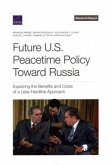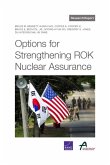"The U.S.-Russia strategic stability paradigm rests on the shared confidence that one side's preemptive counterforce strike would fail to disarm the other side. Both sides are mutually vulnerable to retaliation, and thus have no incentive to strike first. Yet the United States has developed significant prompt counterforce capabilities that Moscow fears could be used for a first strike. These threat perceptions have become a significant source of instability in recent years. The authors examine the historical origins of this dynamic and its impact on bilateral stability. They also evaluate possible policy changes that could mitigate that impact. The authors identify significant consequences for the United States that could arise from Russia's growing concerns about its ability to retaliate, such as Moscow's development of a suite of novel capabilities to address this issue and the potential crisis instability resulting from use-them-or-lose-them fears. Although these negative consequences are significant, they should be weighed against the benefits provided by current U.S. posture that are documented by the authors. The report outlines self-restraint measures--that the United States and Russia could take either together or unilaterally but in coordination--that would provide a degree of reassurance about the parties' lack of intention to execute a preemptive counterforce strike by complicating the ability to carry out such a strike on short notice. These modest steps could mitigate the negative consequences of current approaches without any dramatic changes in force structure, posture, or even employment policy. The stabilizing effect of these steps, however, could be significant."--Publisher's description.
Hinweis: Dieser Artikel kann nur an eine deutsche Lieferadresse ausgeliefert werden.
Hinweis: Dieser Artikel kann nur an eine deutsche Lieferadresse ausgeliefert werden.








